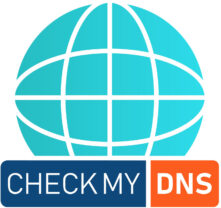What is DNS Hijacking?
DNS hijacking is another type of cyber-attack that takes control of the DNS settings and forces a user to go to malicious websites. DNS stands for Domain Name System. In simple terms, it works like an internet phonebook; it changes domain names (like www.example.com) into an IP address where computers search for the web. Using DNS hijacking, hackers can intercept or alter the DNS request of a person to get hold of that person’s data or just spread malware and viruses on their system.
There are a variety of forms of DNS hijacking.
- Local DNS Hijacking: The local DNS settings on a user’s device can be modified due to malware that can facilitate access to malicious sites through a user’s system.
- Router DNS Hijacking: Hackers penetrate the router through weak or default passwords, change DNS settings, and reroute data from all devices hooked up.
Man-in-the-Middle (MITM) DNS Hijacking: An attacker intercepts the DNS queries while they are being sent over the network before reaching the real DNS server.
- ISP DNS Hijacking: A few service providers use DNS hijacking as a method of hosting their advertisements or analytics. This is much less common, but when it is done, it is mostly benign and not malicious in nature.
DNS Hijacking Process
The DNS hijacking process is a bit as follows: The process has various stages; it starts with access to a DNS configuration or redirection of DNS queries. For simplicity, here are the steps:
Infiltration: The first step is infiltrating a device, router, or network. Most of the time, it happens through phishing emails, malware downloads, or exploiting weak passwords on devices.
Changing DNS Settings: They change the DNS settings after gaining access so that requests for certain domains-or all domains-point to IP addresses of their choosing, like fake versions of legitimate websites.
Redirection of users: Phishing sites redirect the DNS queries of users who are actually trying to reach authentic sites. They will unknowingly reach the phishing sites, which look exactly like authentic sites but are designed for collecting usernames, passwords, and other financial information.
Dangers of DNS Hijacking to Websites and Users
- Data Theft: Any sensitive information entered on the hijacked sites by the users, such as their bank details or login credentials, can be used for identity theft and financial fraud.
- Reputation Damage: Victim websites of DNS hijacking will suffer damage to reputation. If users feel that they cannot trust the security of a site, then they may not interact with the site.
- Financial Damage: Hacked firms lose some financial value via customer loss, service outage downtime, and even attorney-liable damage.
- Spreading Malware: Many hijackers employ DNS hacking for the distribution of malware or viruses. These cause damages like spyware or ransomware on users’ PCs.
Strong DNS Servers and DNS Security Extensions (DNSSEC)
You should choose a DNS provider that is known for its security. Some of the DNS services, like Google Public DNS or Cloudflare’s DNS, have other security features.
DNSSEC, or Domain Name System Security Extensions, is an extension suite added to give the DNS more security with regards to verifying responses as they have not been modified in transit. With this kind of mechanism enabled for DNSSEC on your domain, it’s safe from being spoofed or intercepted.
- Implement HTTPS and SSL/TLS Encryption:
- Encryption in HTTPS as well as usage of SSL/TLS certificates protects whatever data is exchanged between your website and users. Even with DNS hijacking, such data transmitted would be a good cover. It cannot save you from being redirected; however, the user would get warned if the SSL certificate had been missing or invalid from a fake website.
- Certificate Authorities
- Make sure you look for real SSL/TLS certification as well as impress upon them that they should only consider believing sites using HTTPS within the URL.
- Secure Your Router and Network Devices :
- Change default user names and passwords on the routers and switch on the firewall protection. Keep the firmware updated and secure against any vulnerability issue.
- Switch on network encryption, such as WPA3 for Wi-Fi; this will encrypt communications so that man-in-the-middle attacks are blocked.
- Awareness of Users and Staff about Phishing and Malicious Activity
- Aware and educate users and staff as to how phishing attacks work their way into DNS hijacking. Let them understand that they should never click or open suspicious links instead check if the URL for the website has been modified.
- Encourage users to check for HTTPS and SSL certificates when entering sensitive information and to be cautious if something seems “off” about a website.
- Regularly Monitor DNS Settings and Logs:
- Check your domain’s DNS settings regularly to catch unauthorized changes early. Regular checks can help identify potential issues and prevent prolonged attacks.
- Monitor DNS activity on your network for suspicious behavior. A sudden change in traffic or strange DNS requests may be indicative of a hijacking attempt.
DNS hijacking is a significant cyber threat that targets the DNS infrastructure to divert users to fraudulent sites and steal sensitive information. By gaining unauthorized control over DNS settings, attackers can compromise website security, damage reputations, and impact user trust. Understanding how DNS hijacking works, applying best security practices, and informing the user of possible threats can work a long way to protect against DNS hijacking. This is as much keeping with taking a proactive approach to DNS security as much as it can be about both businesses and users concerned
